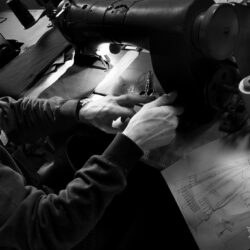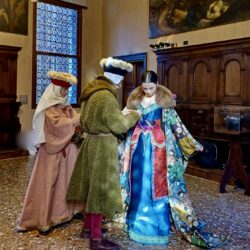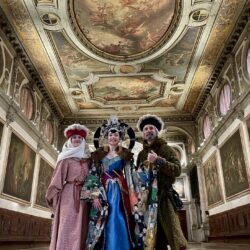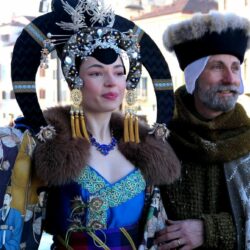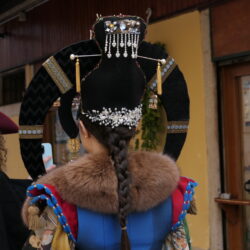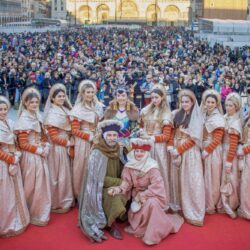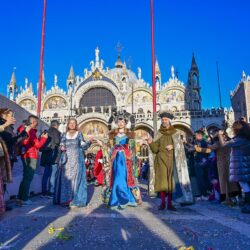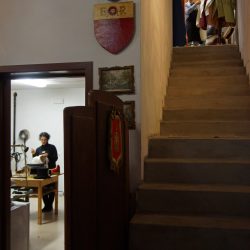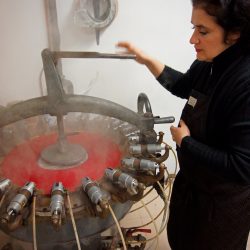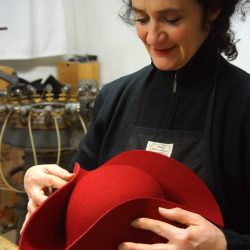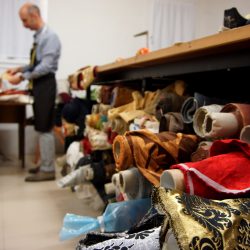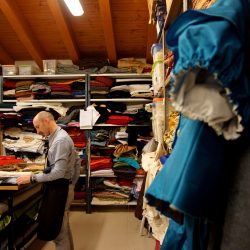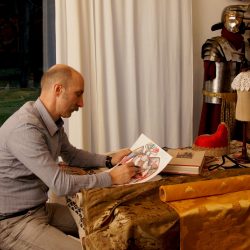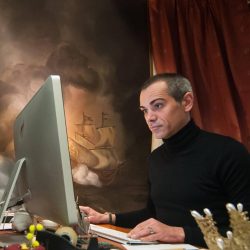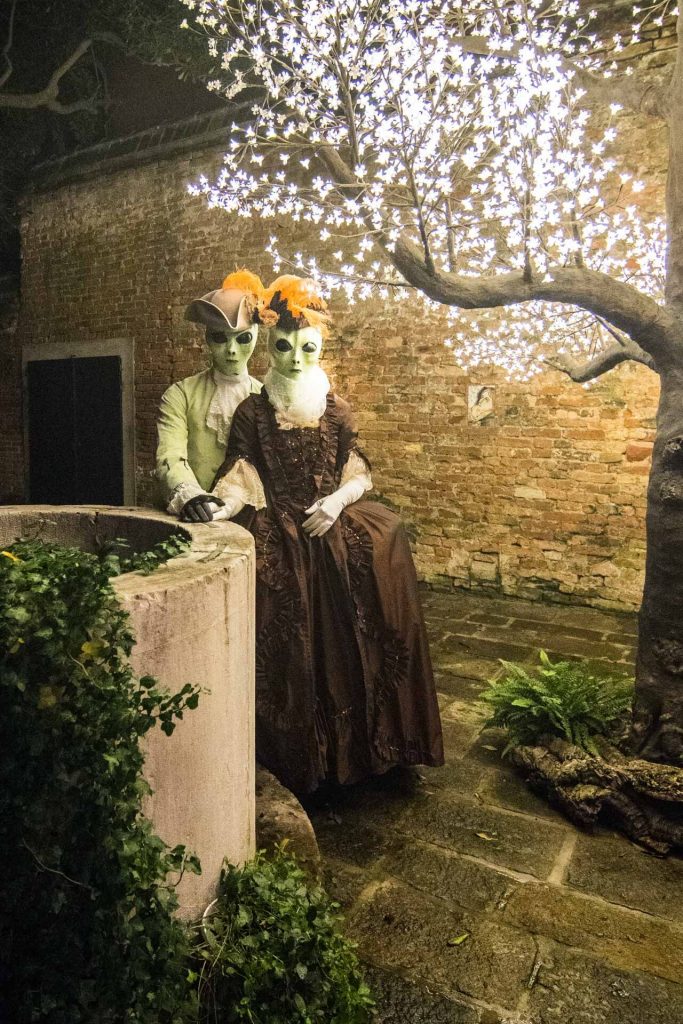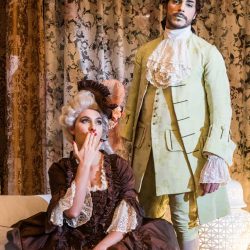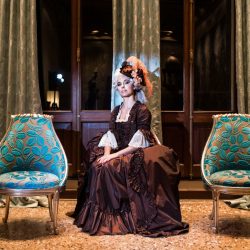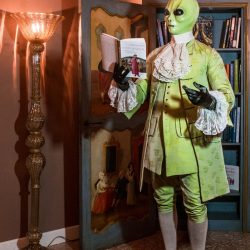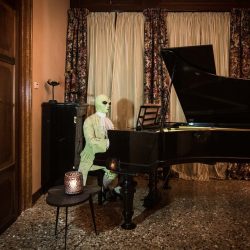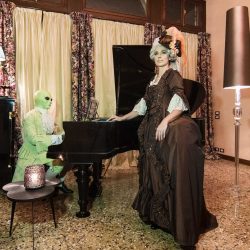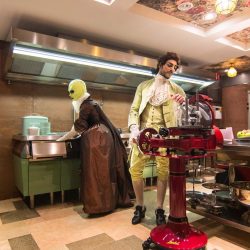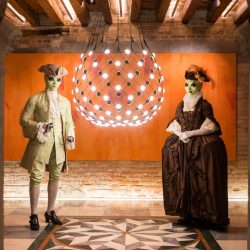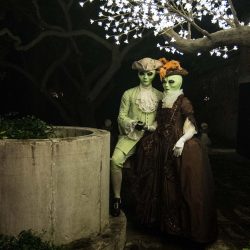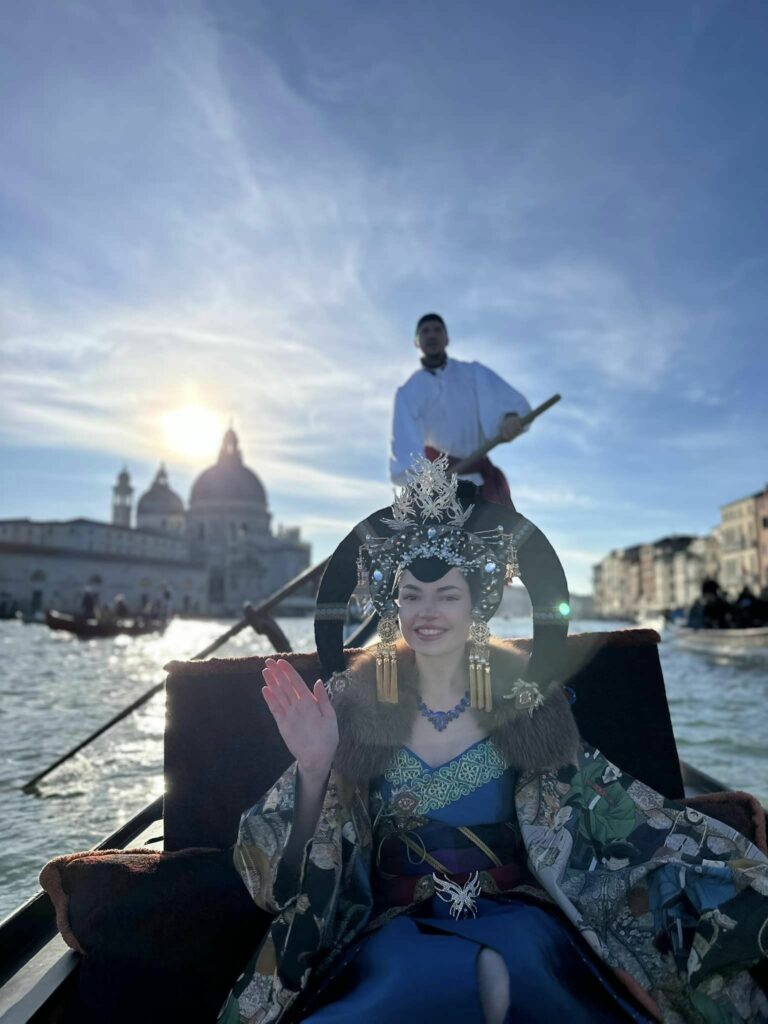
“Maria dell’anno 2024”, a tribute to Marco Polo’s long journey to the Far East
700 years ago the greatest of European travelers left us a text that told of distant peoples and cultures, of different uses and unknown technologies: silk, porcelain, paper, perfumes… in his Livre de marvels du monde written in a new language, the international Venetian Franco spoken by all merchants, Marco Polo describes sophisticated populations, with large and rich palaces, precise ceremonials, and the most avant-garde material culture of the era.
Francesco Briggi, inspired by this great explorer, created a one-of-a-kind dress. To describe the cultures that the most famous Venetian in history encountered, he studied the characteristic clothing of different populations, and then built a dress that spoke of exchanges, union, sharing.
“The oriental princess” wonderfully worn by Mary of the Year Silvia Zecchin, is a continuous reference to Tibetan, Mongolian and Chinese culture, and each element is characterized by pieces from different cultures.
The hairstyle characterized by the shape of large inverted ox horns, refers to the myth of the winged princess world’s protector, who is Princess Khutulum, who was actually met by Marco Polo and inspired the Western fairy tale of Turandot. The vertical part that stands out behind the same hairstyle is instead characteristic of Tibet, while the butterflies that play as the lady moves, the small golden lanterns, the pins, are a precise reference to Chinese culture.
The belt, the fur collar, the double-breasted closure crossed at shoulder height, are typical details of the Mongolian culture which fought the harsh climate with layers and skins, influencing both Tibetan fashion, which remained simpler in its result, and that Russian, which still retains the closure in the typical traditional uniforms.
The fabric could only be silk in different processes, from shantung to lampas with Chinese lion motifs, while the trimmings that border the entire dress were made entirely by hand in India, thus paying homage to the long silk road.
A characterizing element beyond the hairstyle are the large and rich kimono sleeves, made of printed cotton, which recall the paintings of the “Chinese ancestors”, a classic motif of Chinese culture. In this case we recognize the Emperor with his court.
Cultures, centuries of fashion and thoughts met in the hands and scissors of Francesco Briggi who thus created a hymn to peace and union dressing the hopes of a young Maria ready to pass on the traditions, desires and dreams of a young Venetian!
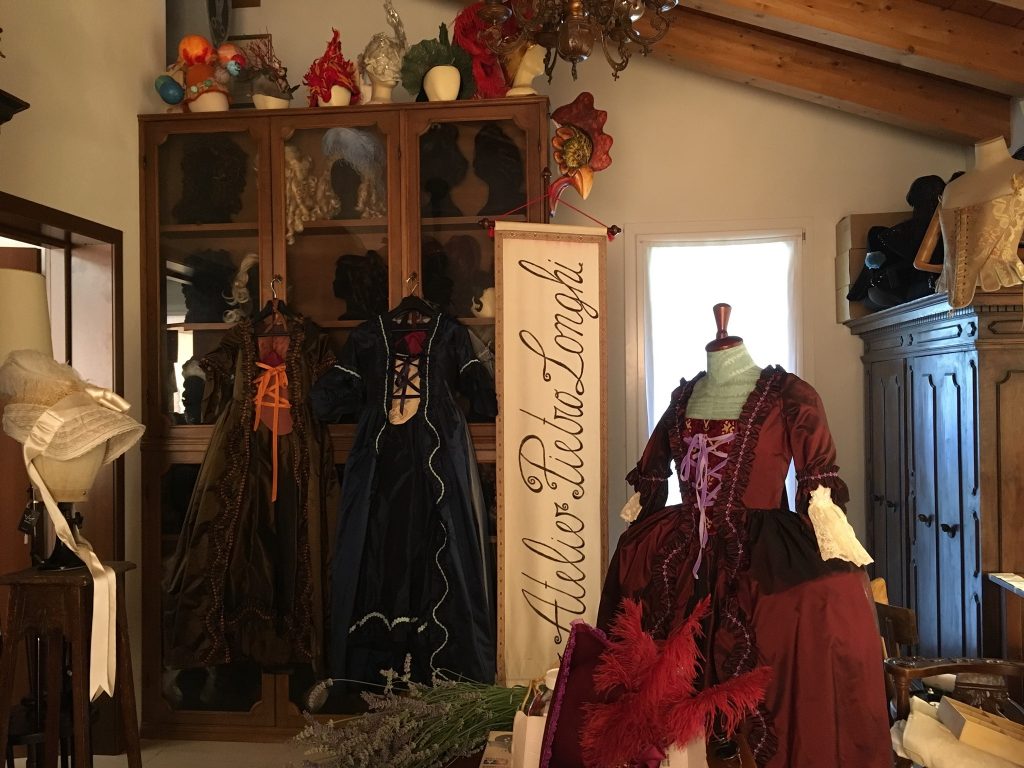
We moved!
The Atelier Pietro Longhi costumes warehouse has temporarily left the Venice Historic Center to approach the laboratories, which for the past seven years have been located in Noale.
It was now impossible to manage the large clientele of the tailor’s shop, the rentals for the numerous productions in the mainland, the exhibitions that are continuously organized on the national territory and the numerous fairs that Francesco and Anna animate throughout Europe. The movement of costumes with their accessories created too many transport and logistics problems. Naturally in February 2020, in conjunction with the carnival, the entire Pietro Longhi Atelier will return to Venice, in the most prestigious of the venues, the Scuola Grande San Giovanni Evangelista, where you can find us with all our products for sale and rent from February 3 to 3rd March.
Customers who do not reach us at fairs or flea markets will be able to find our products on the e-commerce website
It is possible to visit the headquarters in Noale, where in addition to production there is a small showroom, but it will be necessary to make an appointment. The contacts remain the same, so for any information we are at your disposal!
See you soon, Francesco, Anna and Raffaele.
